- Home
- Rural Development
- Nature Trails
- Nature Trails
- Northeast Sector
- Ferrocarril Vasco-Navarro
Basque Navarre Railway Greenway Nature Trail. Estella – Murieta section
Description

The old station of Estella: starting point of the Vasco-Navarro railway journey.
The railway adventure starts in Estella, in the train station. Vegetable gardens on the floodplains of the River Ega bid farewell to this town in Navarra, tracing the river among riverside forests and dense oak groves. Sprinkled along the route the beautiful towns of Zubielqui and Zufía are visited, with the Sierra de Lóquiz mountain range dominating the scenery, and this section coming to an end at the old station of Murieta.
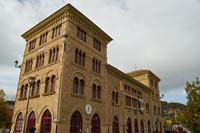
The route starts right in the centre of the Navarran town of Estella / Lizarra, specifically at the old Vasco-Navarro railway line station, which has now been converted into a bus station, tourist office and bar. Kilometre point 0 is located on the side of the building next to a fountain.
After crossing two zebra crossings, the route heads right, up Teobaldo II street, zigzagging left and right to continue along the Paseo de los Llanos street in the park with the same name. Along the red asphalt bike lane the River Ega is crossed and after two new zebra crossings the route advances in parallel to the river.
After crossing the river and going up the Remontival street, the route turns right on Arieta street, now advancing along the old, original railway line. Along a section that is shared with motor vehicles, the town is left behind, enjoying fertile vegetable gardens on both sides, making the most of the River Ega floodplains.
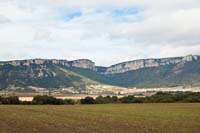
After more than 3 kilometres, the Nature Trail’s interpretation panel precedes a lit tunnel slightly over 150 m long and after this, the River Ega is crossed via a bridge for this purpose. Here a nurtured landscape of alder trees (Alnus glutinosa) gift the scenery with extraordinary beauty.
The asphalt gives way to a gravel path leading faithfully along the route of the old railway line until, slightly before kilometre point 4, it turns left to cross road NA-7454 and via Estación street, the town of Zubielqui is entered. Road NA.132-A is crossed by means of the first zebra crossing and, after passing between its houses, Zubielqui is left behind by the asphalt trail that leads to the right of the road.
Metres after passing kilometre point 5, the asphalt is left for a gravel trail on the left. Leaving the riverside vegetation behind, that is due to presence of streams and brooks, an incline of just over one kilometre commences which plunges the traveller into a deep oak grove (Quercus ilex). The district of Metauten can be made out on the left of the trail, with the Sierra de Lóquiz mountain range dominating the landscape.
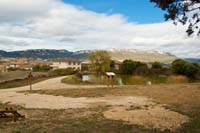
The traveller enters the town of Zufía guided by the urban signs that direct towards the rest area, which has a natural fountain and is guarded by two small lagoons. Once the second small wetland has been passed, kilometre point 8 marks the beginning of a fun decline past the last houses in Zufía and a new oak grove, shortly afterwards crossing a small wooden walkway and road NA-7310.
Once past the town’s cemetery, a new oak grove is reached on the left and cropland on the right. After kilometre point 9 a left turn is made to fully enter the oak grove and face a staggering descend, with slopes of up to 7%, which will delight experienced cyclists, but less experienced travellers should take care.
At the end of the decent, the Ubaria brook is overcome and the route continues in parallel to road NA-132-A, with the oak grove on the right and the agricultural land on the left.
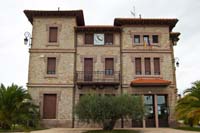
Coinciding with kilometre point 12, different farm, agriculture and industrial plots are reached which lead the traveller, along a straight section over a kilometre long, to the old station of Murieta. Zigzagging left and right along Estación street, the traveller reaches the old interpretation panel of the next section of the Vasco-Navarro Railway Greenway Nature Trail, therefore bringing this section between Estella and Murieta to an end.
However, the cycling traveller can continue recreating the journey that the train made back in its heyday by continuing along the trail, as such the town of Murieta will never be the final end.
Map
Puntos de Interés
Cultura
Hidrografía
Infraestructura
Orografía
Vegetación
Profile
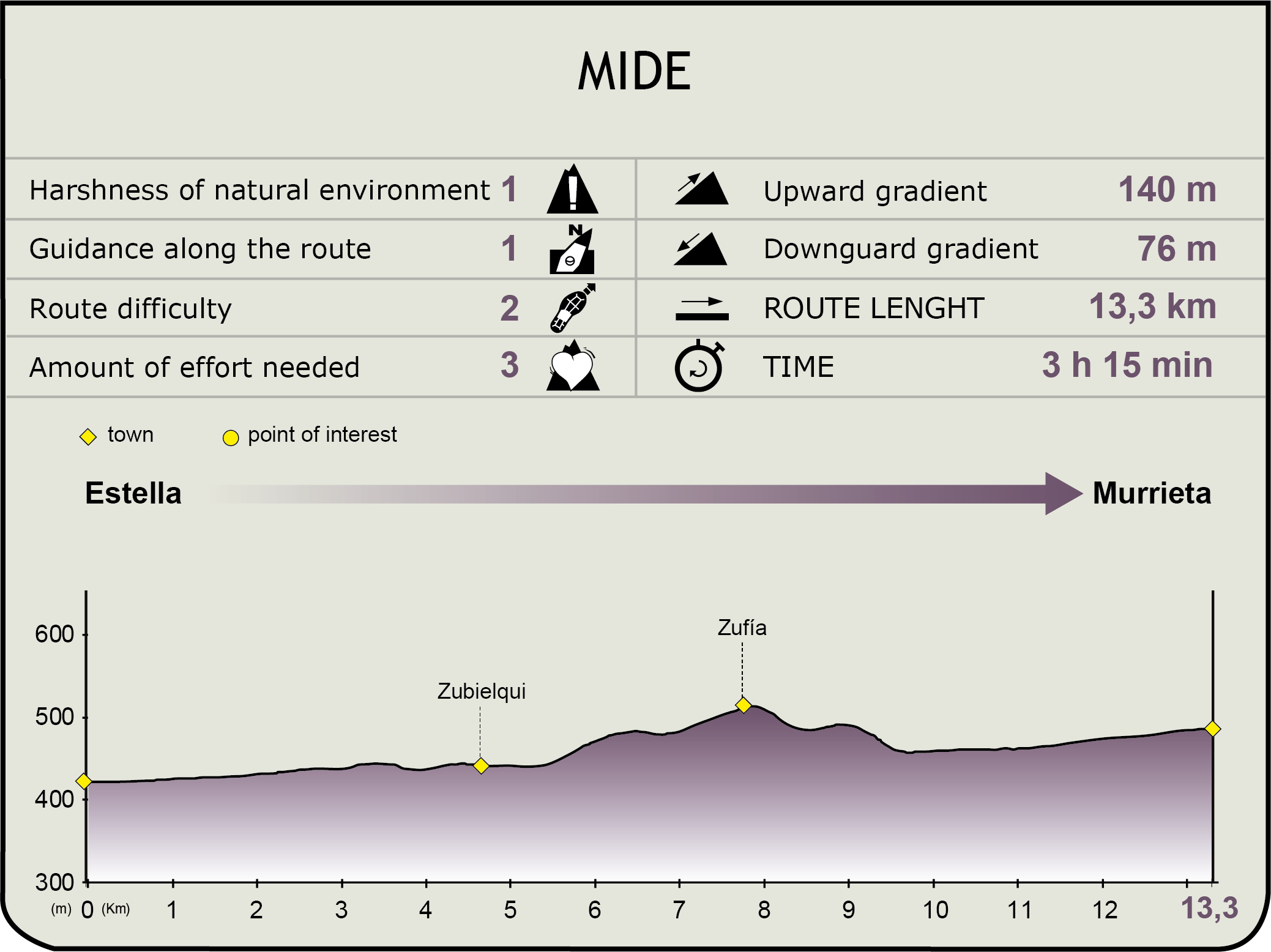
MIDE (Method for the Information of Excursions)
Featured
Featured
Ríos Ega-Urederra SAC
The Special Area of Conservation known as Ríos Ega-Urederra covers an expanse of more than 530 ha, encompassing all of the River Urederra and the section of the River Ega that runs between the Navarran towns of Zuñiga and Estella-Lizarra. The predominant vegetation in this Protected Natural Area is the deciduous riverside forests, with sections of well conserved alders (Alnus glutinosa), in which different signs can be observed which demonstrate the presence of otters (Lutra lutra). Poplar plantations are also abundant for the production of wood.
Sierra de Lóquiz SAC
The Special Area of Conservation known as Sierra de Lóquiz covers an expanse of more than 13,140 ha, encompassing the Sierra de Lóquiz mountain range and a wide section of surrounding valleys. There are different vegetation formations, those that stand out include the Aleppo Pines and Holm Oaks (Quercus ilex) which take up a large space in the Protected Natural Area. Moreover there are Pyrenean oaks (Quercus pyrenaica) and European beech trees (Fagus sylvatica). In terms of fauna, there are a number of catalogued species and some that are threatened, with populations of the beautiful beetle known as the stag beetle (Lucanus cervus) and various species of bats such as the bent-wing bat (Miniopterus schreibersii), as well as a nurtured and biodiverse population of birds.